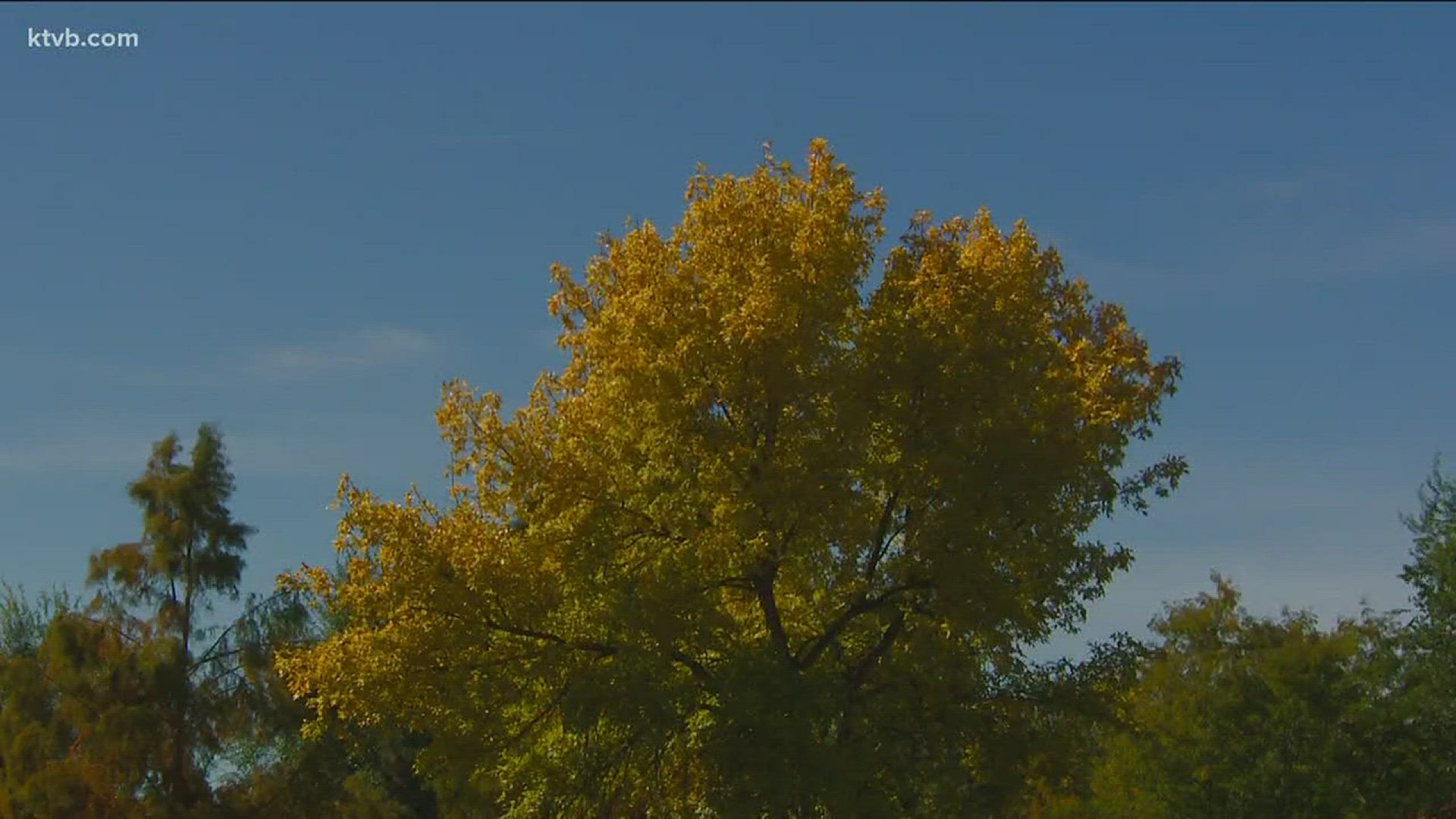Summer is definitely over, but this can be such a pretty time of year, with all of the beautiful colors coming out on the trees and shrubs. Many of you have been posting colorful fall pictures on social media.
But have you wondered just what makes the leaves change from green to red, yellow and orange? Today on “You Can Grow It,” garden master Jim Duthie tells us how it happens, and he says our cool weather doesn’t really have that much to do with it.
Autumn weather has settled in a few weeks early this year, and it’s looking a lot more like fall every day. The leaves on the trees and shrubs are turning from green to brilliant reds, oranges and yellows. But the cool temperatures actually have very little to do with the onset of these fall colors.
Trees take up water from the ground through their roots and absorb carbon dioxide from the air. Along with sunlight and a chemical called chlorophyll, which gives the leaves their green color, the trees undergo a process called photosynthesis. The result is oxygen, which is released into the air we breathe, and glucose, the sugar which nourishes the tree and helps it to grow.
As the days get shorter, trees instinctively know that they need to get ready for the coming winter. With less sunlight, photosynthesis slows down, and the trees eventually stop making food, and the green chlorophyll begins to disappear from the leaves.
What’s left is the yellows, oranges and reds that were in the leaves all the time, but we couldn’t see them because of the green chlorophyll.
So does the weather have anything to do with leaves changing color? Not really. Leaves change color because of the decreasing amount of daylight as the days get shorter. But weather can make a difference in the intensity of the fall colors.
In some years, those fall colors seem brighter and more spectacular than in other years. When we have a string of warm, sunny fall days and cool, but not freezing nights, we tend to see more red colors. The leaves produce sugars during the daytime, but the cool nights lock that sugar in the leaves. Compounds called anthocyanins allow the trees to recover those nutrients before the leaves fall off, and they give the leaves their bright shades of red and purple.
Yellow, gold and orange colors are fairly constant from year to year and are produced by a substance called carotenoids, which are always present in the leaves.
Severe droughts can delay the fall colors by a few weeks, while a warm, wet period in the fall will dull the brilliance of the colors. A severe frost will kill the leaves, and they’ll turn brown and fall off before the colors can develop.
Different species of trees produce characteristic colors. Oaks turn red and brown. Aspens, poplars and cottonwoods turn mainly yellow and gold. Maples turn bright orange and red. And honey locusts turn a brilliant gold.
Eventually, the base of the leaf closes off, trapping the sugars in the leaf, and the leaf soon detaches from the branch and falls off.
Now the tree will go to sleep for the winter, living off the stored food it produced all summer long, until next spring, when the process starts all over again.
You don’t have to go far to enjoy nature’s colorful show. Down every neighborhood street, along the Greenbelt, and in any park in town, you’ll see a brilliant palette of fall colors in reds, oranges, yellows and golds. And if you’re thinking about planting a new tree, now’s the time to visit local nurseries and garden centers. You’ll be able to see what color that tree will be in your yard next fall.
Fall colors are reaching their peak in the mountains now, although recent cold, snowy weather may have had some impact. The fall colors will start to peak in the Treasure Valley through the rest of October and into early November.
Here is a list of some of the best scenic drives you can take this fall to see the best displays of color.
Jim’s favorite fall foliage day-trips (southwest Idaho)
-Payette River Scenic Byway:
Idaho 55 from Boise to McCall. Alongside the spectacular Payette River, watch for the yellows and golds of aspens, western larch, and tamaracks, against the dark green of the pines.
-Ponderosa Pine Scenic Byway:
Idaho 21 from Boise to Idaho City to Lowman to Stanley. Reds and golds of willows and shrubs give way to the yellows and golds of aspen through the forests along the South Fork of the Payette River, then on into Stanley Basin.
-Sawtooth Scenic Byway:
Idaho 75 from Shoshone to Sun Valley to Stanley. Yellows and golds of cottonwoods along the Big Wood River mixed with reds and yellows of the willows. Be sure to check out Adam’s Gulch north of Ketchum. Crossing Galena Summit, aspens mix with the pines on into the Stanley Basin.
-Owyhee Uplands Backcountry Byway:
This is a back country route, so it is mostly dirt roads with no services, so plan accordingly. But you’ll be rewarded with spectacular scenery, and lots of gorgeous golden cottonwoods and aspens amidst the rugged beauty of the Owyhee Canyonlands. Portals are at either Grandview (Idaho 78) or Jordan Valley, or (US 95).
-Murphy to Silver City:
Turn off Idaho 78 at Murphy. Again, it’s a dirt road to Silver City in the Owyhees. You’ll see brilliant yellows and golds of cottonwoods and aspens with some pines.

